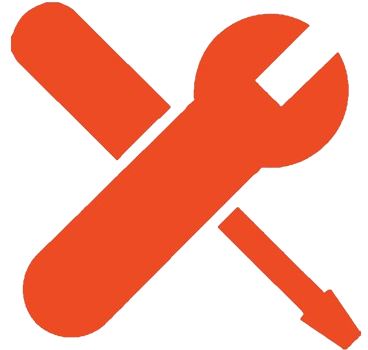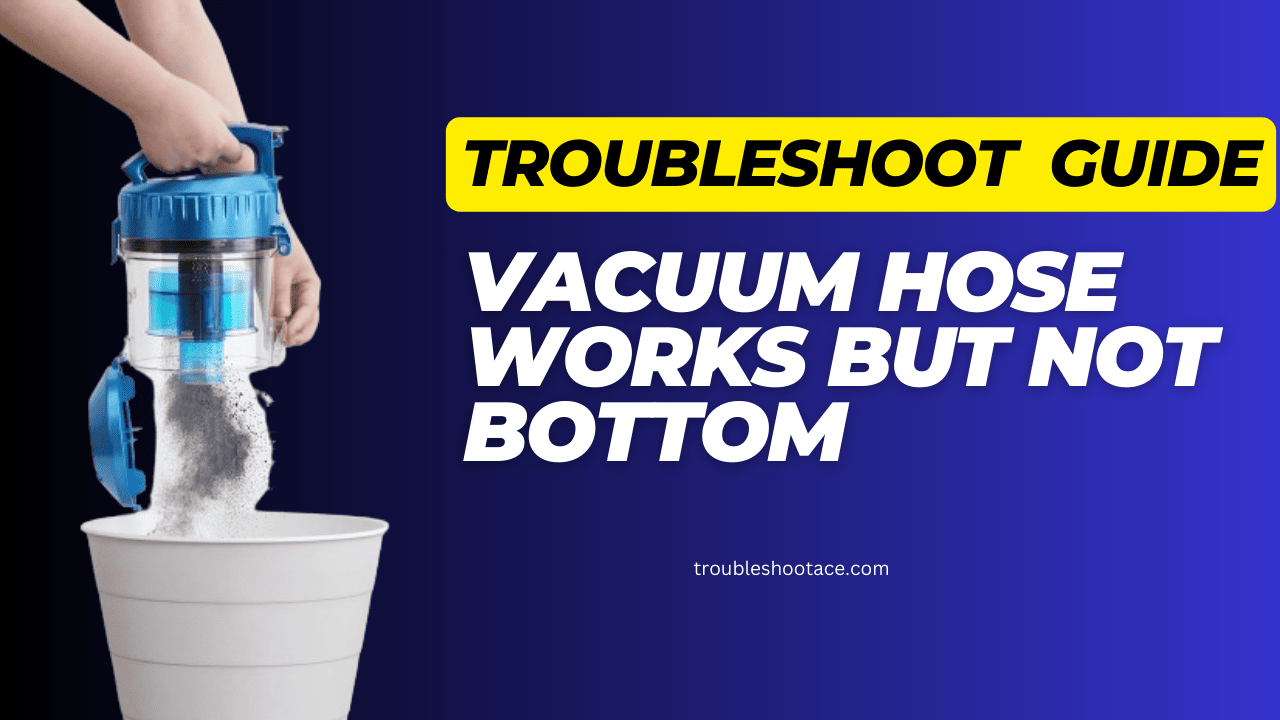When your vacuum cleaner’s hose works fine, but the bottom isn’t picking up dirt, there might be a clog or blockage causing the issue. Let’s troubleshoot step by step:
First, inspect the hose: Check if anything is stuck inside it. Sometimes debris can accumulate, affecting suction. Clear any obstructions you find.
Next, consider the filters: Dirty filters can reduce suction power. Clean or replace them as needed. If your vacuum has replaceable filters, rinse them with cold water and allow them to dry before reinserting.
Thirdly, empty the dust container: A full dustbin can hinder suction. Regularly maintain your vacuum by cleaning the dust compartment.
Fourth, examine the suction tube: Behind the brush roll, there’s a suction inlet connected to a short hose. Shine a flashlight into the head from the top end of the tube to check for clogs.
Lastly, the motor may have a problem if none of the above works. Consider replacing it or just the carbon brushes.
What if my vacuum still doesn’t work?
If your vacuum cleaner still isn’t working despite troubleshooting, here are a few additional steps you can take:
- Check the Belt: The belt that drives the brush roll might be broken or loose. Inspect it and replace it if necessary. A worn-out belt can hinder proper brush rotation.
- Brush Roll: Remove the brush roll and clean it thoroughly. Hair, threads, and debris can accumulate around the brush bristles, affecting its performance.
- Height Adjustment: Some vacuums have height adjustment settings for different floor types. Ensure it’s set correctly for the surface you’re cleaning.
- Worn Brushes: If the brush bristles are worn down, they won’t effectively agitate dirt. Consider replacing the brush roll.
- Professional Inspection: If none of the above steps work, it’s time to seek professional help. There could be internal issues with the motor, wiring, or other components.
Troubleshoot Steps: Vacuum Hose Works But Not Bottom
Check for Clogs
Clogs are a common issue that can cause your vacuum hose to work but not the bottom. Here’s how you can check for and remove any clogs:
- Before checking for clogs, ensure the vacuum is turned off and unplugged for safety.
- Remove the hose from both the base and the vacuum body. Use a flashlight to look through the hose for any visible clogs.
- Similarly, check the base of the vacuum for any obstructions. Look for clogs near the opening where the hose attaches.
- If you find a clog, carefully remove it using a long, thin object such as a straightened wire hanger or a plumbing snake. Be gentle to avoid damaging the hose or the vacuum.
- Once you’ve removed any clogs, reattach the hose to both the base and the vacuum body. Plug in the vacuum and test it to see if the issue has been resolved.
- To prevent future clogs, avoid vacuuming up large objects or debris that could block the hose or the base.
Checking for and removing clogs is a simple and effective way to troubleshoot when your vacuum hose is working but not the bottom.
2. Inspect the Connections
One of the first things to check when your vacuum hose works but not the bottom is the connections. Sometimes, the hose might not be properly connected to the base of the vacuum body
How to Check the Connections:
- Before checking the connections, always make sure the vacuum is unplugged to avoid any accidents.
- Check the hose for any twists, kinks, or damage. Straighten out any bends carefully.
- Ensure that the hose is securely connected to the base of the vacuum. It should fit tightly and not be loose.
- Similarly, check the connection between the hose and the vacuum body. Make sure it’s tight and secure.
Why This Is Important:
- Loose connections can lead to loss of suction power, causing the vacuum to not work effectively.
- A secure connection ensures that the vacuum can efficiently transfer suction from the hose to the base.
What to Do Next:
Check if this resolves the issue. If not, move on to the next troubleshooting step.
By ensuring that your vacuum’s connections are secure, you can improve its overall performance and efficiency.
3. Examine the Belt
If your vacuum hose is working but the bottom isn’t, the belt connecting the motor to the brush roll may be damaged or loose. Here’s how you can examine and replace the belt if necessary:
- Before examining the belt, ensure the vacuum is turned off and unplugged for safety.
- Remove the base plate of the vacuum to access the belt. The belt is usually located near the brush roll.
- Check the belt for any signs of damage, such as fraying, cracks, or stretching.
4. Replace the Belt (if necessary):
- Purchase a replacement belt that is compatible with your vacuum model.
- Follow the manufacturer’s instructions for replacing the belt. This typically involves removing the old belt and installing the new one in its place.
- After replacing the belt, reassemble the vacuum and test it to see if the issue has been resolved. The brush roll should spin properly when the vacuum is turned on.
- To prevent belt damage in the future, avoid vacuuming up large objects or debris that could cause the belt to wear out quickly.
By examining and, if necessary, replacing the belt, you can ensure that your vacuum hose and bottom works together effectively.
Conclusion
when your vacuum hose works but not the bottom, checking for clogs and examining the belt are essential troubleshooting steps. These simple actions can often resolve the issue and improve your vacuum’s performance. By taking care of your vacuum and addressing any issues promptly, you can ensure that it continues to work effectively and efficiently. Remember, regular maintenance can prevent future problems and extend the life of your vacuum.
FAQs
How do you unclog the bottom hose of a vacuum?
Certainly! To unclog the bottom hose of a vacuum, follow these steps:
- Remove the Hose: Pull the hose off your vacuum. It connects from the roller on the bottom to the tank or bag. If it screws on, unscrew it before pulling it off. Ensure the vacuum is unplugged to avoid shock.
- Clear Large Clogs: Use a broomstick to push through the hose gently. This can force out any large clogs. Be cautious not to break or puncture the hose. If the hose is translucent, hold it up to a light to locate the clog.
- Clean with Baking Soda and Vinegar: Pour ½ cup of baking soda into the hose and shake it to coat the interior. Slowly add ½ cup of white vinegar. Let it bubble inside the hose for 2-3 minutes to break apart any buildup.
- Rinse with Warm Water: Rinse the hose thoroughly with hot water. Ensure both ends are cleaned. Hang the hose to dry completely before reattaching it to your vacuum.
How often should I clean my vacuum hose?
- Cleaning your vacuum hose is essential to maintain its efficiency and prevent foul odors. Here’s a simple guide:
- Frequency: Aim to clean your vacuum hose once per month to keep it in good working condition.
- Steps:
- Detach the Hose: Remove the hose from your vacuum.
- Unclog and Remove Clumps: Check for any clogs or debris. Use a bottle-cleaning brush for stubborn grime.
- Wash It Out: Rinse the hose with a mild detergent or a mixture of baking soda and vinegar.
- Thorough Rinse: Rinse the inside thoroughly with water.
- Dry Completely: Allow the hose to dry completely before reattaching it to your vacuum.
- Remember, a clean hose ensures better performance and prevents potential germs or bacteria buildup.
How do I prevent future clogs in my vacuum hose?
To prevent future clogs in your vacuum hose, follow these helpful tips:
- Empty the Canister Regularly: After each use, empty the vacuum canister to prevent debris buildup. A full canister can obstruct airflow and reduce suction efficiency
- Check and Clean Filters: Regularly inspect and clean the filters. Dirty filters can hinder airflow and contribute to clogs. Refer to your vacuum’s manual for filter maintenance instructions.
- Inspect the Hose: Every two to three weeks, examine the hose for any obstructions.
- Avoid Vacuuming Liquids: Refrain from vacuuming water or other liquids. Moisture can lead to clogs and damage to the vacuum motor.
- Check for Large Objects: Before vacuuming, scan the floor for large items that could block the hose. Clear any obstacles to prevent clogs.


